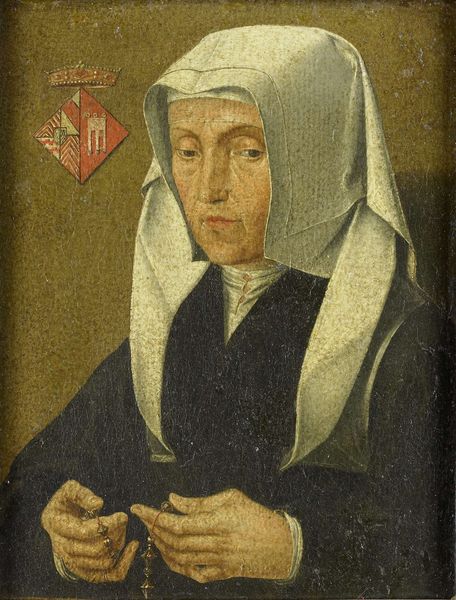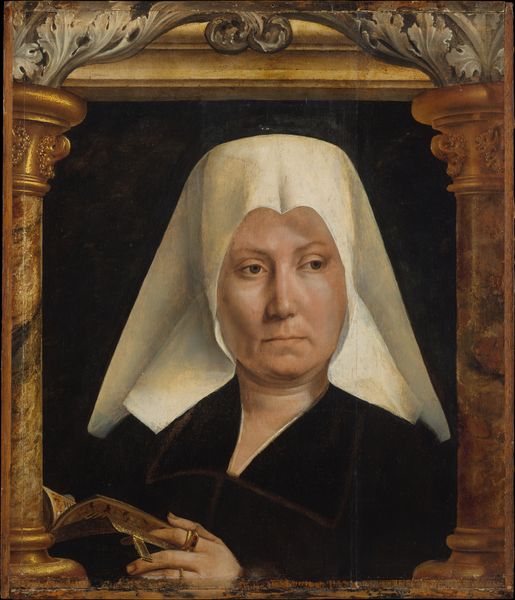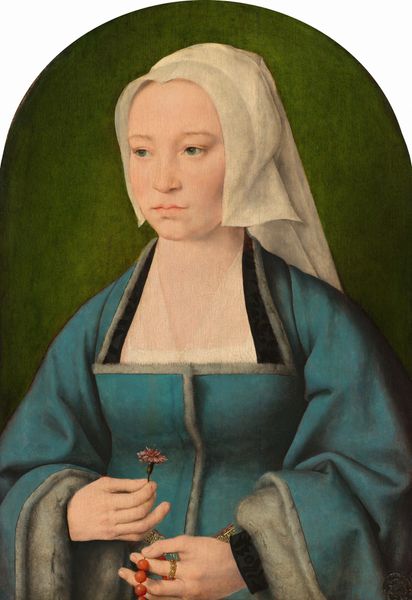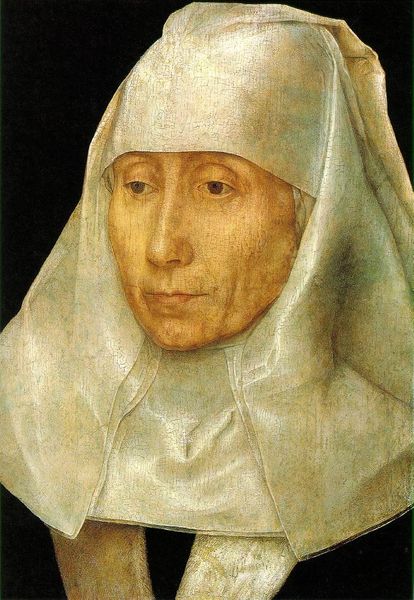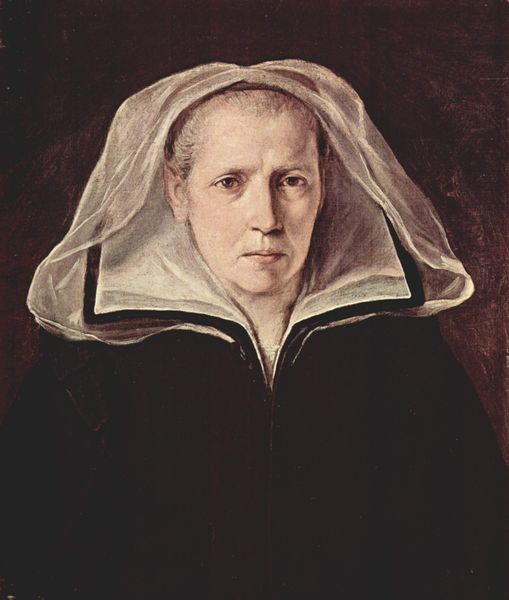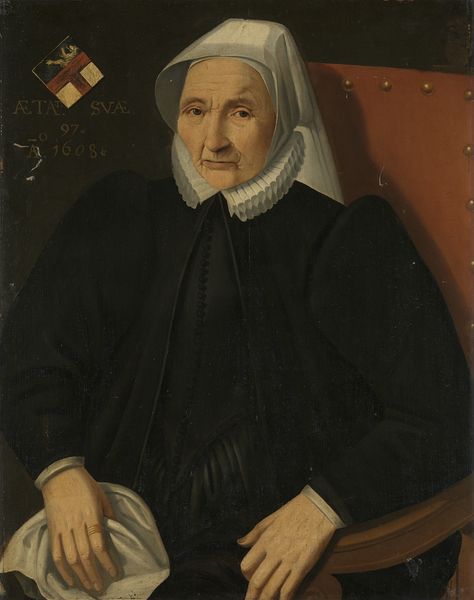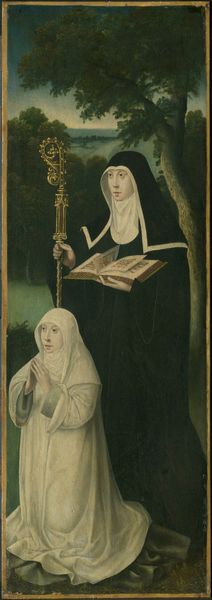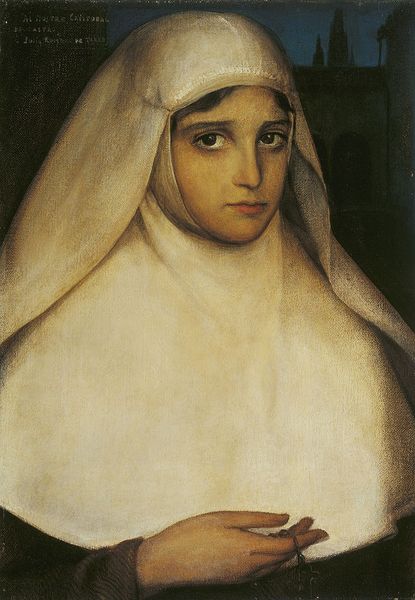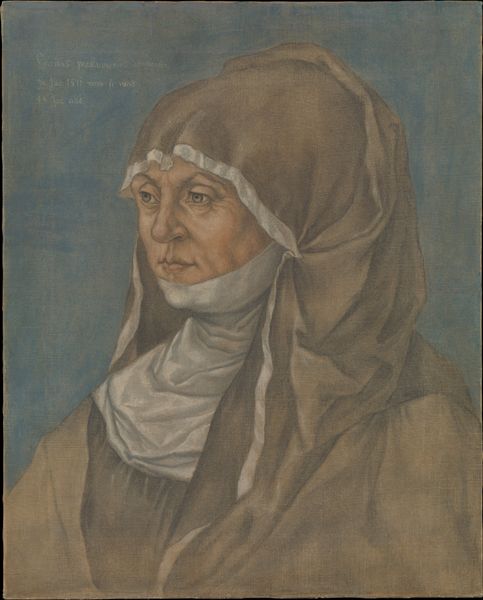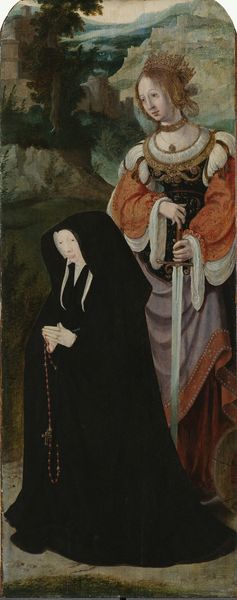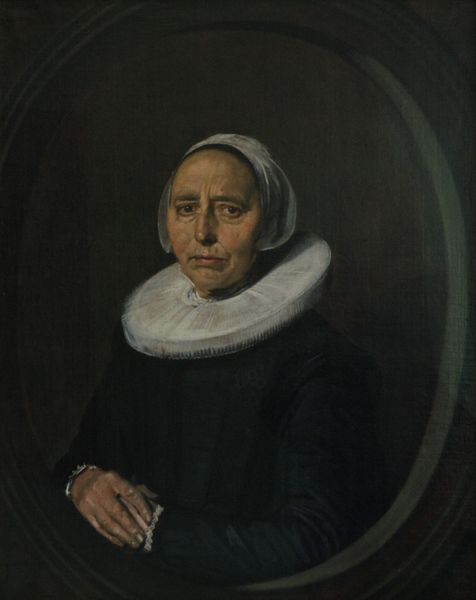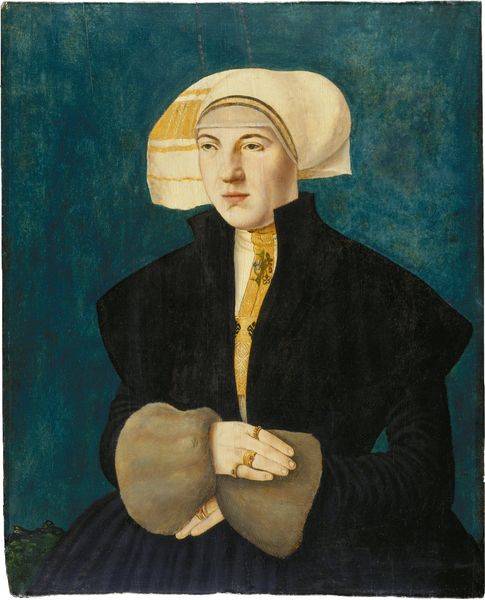
Portrait of Jacomina Claesdr van Ruyven (died 1509), Wife of Arent Franckensz van der Meer c. 1550 - 1560
0:00
0:00
painting, oil-paint
#
portrait
#
painting
#
oil-paint
#
11_renaissance
#
northern-renaissance
Dimensions: painted surface height 36.2 cm, painted surface width 25.0 cm, support height 43.1 cm, height 46.2 cm, support width 31.5 cm, depth 4.3 cm
Copyright: Rijks Museum: Open Domain
Editor: Here we have a painting from sometime between 1550 and 1560, a portrait of Jacomina Claesdr van Ruyven by an unknown artist. It's painted in oil, and the subject's dark clothing and stark white headdress really draw your eye. What strikes you about the composition? Curator: Immediately, I'm drawn to the geometrical interplay between the oval frame and the triangular drape of her headdress. The artist masterfully uses chiaroscuro, that stark contrast of light and shadow, to define form. Consider the way light illuminates the planes of her face, drawing out volume and creating a focal point. Editor: Yes, the lighting is incredible! How does the material itself – the oil paint – contribute to the reading of the piece? Curator: Observe the surface texture. It’s relatively smooth, typical of Northern Renaissance portraiture, and enables us to clearly decipher line and detail. This smoothness facilitates a strong sense of realism, but what semiotic systems do we detect in the painting's use of colors? Editor: The red beads against her black garment? Could it be a signifier of passion and piety? Curator: Indeed. Consider, also, the formal relationship between the painting's limited color palette, the subject's garments and her austere expression, do you see visual austerity at play in creating meaning? Editor: Now that you point it out, yes! The limited palette adds to the sense of reserve and piety. I initially saw a straightforward portrait, but I'm beginning to see deeper complexity in how the artist created a layered reading through the formal components. Curator: Precisely, and in the relationship between these signifiers lies the essence of art historical interpretation. This is a perfect starting point for a deeper reading into Northern Renaissance ideals.
Comments
No comments
Be the first to comment and join the conversation on the ultimate creative platform.
